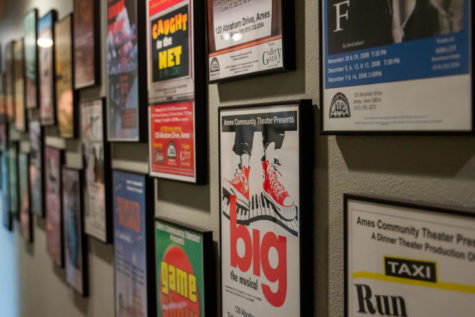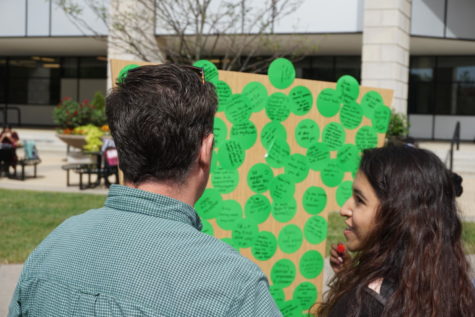Dining halls find ways to be more sustainable
Photo: Julie Vujnovich/Iowa State Daily
ISU Dining introduced reusable to-go containers as a part of its sustainability efforts. Students can purchase the containers for $6 and reuse them at dining centers on campus.
April 18, 2011
As thousands of students pass through Iowa State’s dining halls each day the only thing on their minds is satisfying an appetite. But for those who are responsible for providing that service, they’re thinking about how to get the food and if they can do it in a sustainable way.
Local food: Five years ago Iowa State coordinated a small program with local farms that would provide different kinds of produce to ISU dining halls. Today, $600,000 of ISU’s dining budget goes toward purchasing food from those farms. Nancy Levandowski, director of ISU dining, said they’re still shooting for a higher goal of incorporating locally grown food into the menus.
“Right now 5 to 10 percent of our food comes from local places,” Levandowski said. “But we’d like to get that up to 35 percent.”
The food bought from local farms ranges from fruits, vegetables, dairy and meat. Some of the local farms include Onion Creek Farms by North Dakota St. and The Berry Patch Farm in Nevada, but all of the farms are within Iowa’s borders.
Trayless dining: The dining program is also trying to be more sustainable in other ways outside of food specifically. Three and a half years ago the idea of going “trayless” was introduced by a group of students. The concept was created to attempt to find a way to waste less food. In fall 2009, ISU Dining made the renovated Season’s Marketplace a completely trayless dining hall. The difference in waste was drastic between Season’s and Union Drive Marketplace.
“The waste was twice as much at Union Drive per person than it was at Season’s in 2009,” Levandowski said.
Today, all of the dining halls have gone trayless. She also said that on average, Union Drive Marketplace and Seasons save 2,060 pounds of food per week.
Food donations: While dealing with waste issues has shown to be successful, ISU Dining has also found a way to make use of food that is still edible. If the dining halls have leftover food, it’s taken to Food at First, a soup kitchen located on Kellogg Avenue.
“Food at First offers eight free meals per week as well as a ‘Free Market’ that gives away perishable goods on Monday and Thursday nights,” Levandowski said.
To-Go containers: Chantal Roberts, senior in agronomy and the ISU Dining sustainability coordinator, helps come up with other “go green” initiatives. One of these initiatives is the To-Go Container available at dining halls, which came about in a conversation among students.
“Some of the dining halls used to offer disposable containers that students could put food into and eat at a later time,” Roberts said. “The problem was that these disposable boxes would build up in the trash at residence halls.”
Roberts, along with others decided they needed to have a To-Go Container program that was consistent with all three dining centers. They also wanted it to be sustainable.
“We decided to go with a reusable container,” Roberts said. “Students pay $6 for it and use it whenever they want.”
Students don’t even have to clean it themselves. Whenever they want to use it again, they can take it in and exchange it for a clean one. Its sustainability appeal and convenience have already made it a popular item, even with its short time of being around.
“Within two months 10 percent of students had purchased one of the containers,” Roberts said.
With trends in sustainability becoming more popular nationally, Levandowski said she sees ISU students wanting the same thing. Though sustainability is a good thing, the dining halls do face some obstacles.
“Part of sustainability is looking at the seasonality of food,” Roberts said. “People want strawberries in the middle of winter, but that’s hard to find when you live in Iowa.”
Finding more sustainability trends while meeting students’ needs has pushed ISU Dining to further develop more options for ISU students. Levandowski said a lot of this development comes from students themselves.
“We owe a lot of these new ideas to students,” Levandowski said. “Their participation helps us figure out what our focus should be and how we can become more sustainable.”

















